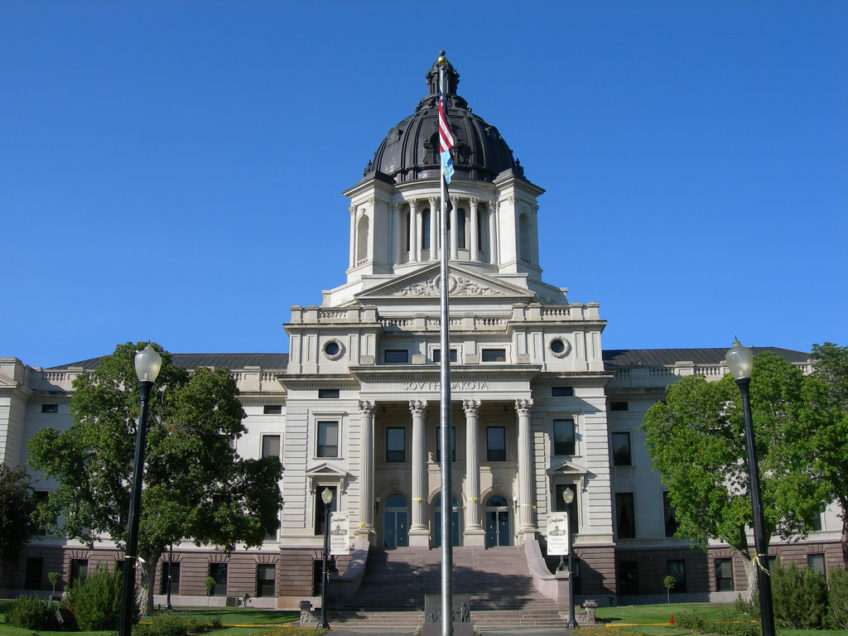South Dakota State of the State: Mixed Agenda of Pro-Growth Regulatory Reform but Possible Tax Hikes
Spending restraint, budget reform, and tax relief proposals were absent from the address.
South Dakota Governor Dennis Daugaard’s 2018 State of the State focused on workforce development, public education, occupational licensing reform, a possible transportation tax increase and support for overturning legal precedent that could saddle online business with substantially increased costs. Unfortunately, substantive spending restraint, budget reform and tax relief proposals were absent from the address.
The workforce is a “long-term challenge facing our state…Our state does not have enough workers in many skilled fields and this is a barrier to economic growth.” Many of the solutions the governor offered were education-centered, such as apprenticeship programs and post-secondary education. He pointed to data and academic studies showing that just one-third of jobs are “now filled with employees with a high school diploma or less” and that just one percent of jobs created nationally since the end of the Great Recession went to this category. The governor reports that just one-fourth of those entering South Dakota public high schools complete post-secondary education within 10 years.
The solutions discussed to remedy this challenge hold promise. The Career Launch program provides information about career-options through “apprenticeships, internships and job shadowing during school.” A private donation from a single individual, Denny Sanford, is also funding hundreds of full-ride scholarships for technical training in fields ranging from agriculture to robotics. Many high school students are now taking advantage of the opportunity to earn dual credits in university courses including technical courses.
The governor enthusiastically explained two pro-growth business measures. Of high importance, the governor is working closely with the Trump administration to streamline professional licensure. Across the nation, tradespeople in a variety of professions ranging from hair braiding to florists to electricians to barbers find relocating to a new state difficult due to state-specific licensure requirements. South Dakota is eager to enter into agreements with other states to create reciprocity or at the very least to grant relocating practitioners 18 months to work while obtaining a license in the new state. This reform will certainly attract new workers including entrepreneurs. He also proposed to alter state alcohol laws which currently discourage microbreweries from setting up shop in the state. The support for professional licensure and alcohol law reforms bode well for business opportunities.
The governor applauded the enactment of the Blue Ribbon Task Force on Education two years ago but unfortunately focused only on the spending aspects. Teacher pay jumped 8.8 percent statewide in the first year, with some districts rocketing nearly 30 percent higher. Reforms must include far more than increasing teacher pay and retention or increasing funding overall. Education choice is direly needed in South Dakota. The state ranks 46th in terms of education policy, including an “F” in private education school choice and D- in teacher standards. South Dakota ranks 49th in outcomes, based on National Assessment of Educational Progress (NAEP) scores.
The governor strongly suggested that he may support additional tax increases to fund transportation infrastructure. “No one likes tax increases but it is less expensive to maintain a good road than to rebuild a bad one.” Just three years ago, the legislature increased the gas tax by nearly 30 percent per gallon (22 cents to 28 cents of state excise tax). This generates $85 million annually in new transportation revenue. With overall state government tax receipts increasing by 14 percent from 2013-2016 (per the Federal Reserve), perhaps these plans should be placed on hold.
The governor celebrated the state’s challenge to established constitutional precedent prohibiting states from placing “undue burdens on interstate commerce.” The Supreme Court held in Quill Corp v. North Dakota (1992) that states cannot impose tax reporting or collection duties on out-of-state businesses where such businesses’ only connection to the state involves the use of common carriers such as the mail service or the licensing of software to an in-state resident. Even with these “substantial nexus” restrictions, total sales and gross receipts taxes collected have soared 33 percent since 2010 through 2016 (latest available Federal Reserve data). The litigation to overturn precedent has already burdened taxpayers with substantial attorney’s fees and court costs. Even if upheld in Court, this action will hamper economic growth by burdening the very job creators that help light the way to prosperity.
The governor also expressed a desire to “strengthen” the Building South Dakota program by making its funding levels more stable. Although well-intentioned, the program directs government resources in the form of grants, loans, loan guarantees and subsidies to scores of politically favored projects. Although a relatively small portion of the general appropriations budget (under one percent) is diverted to this fund, much of the more than $11 million annually could be better used to lower overall property tax or sales tax rates in the state.
South Dakota’s Rich States, Poor States: ALEC-Laffer State Economic Competitiveness Index ranking has steadily declined from 2nd place in 2012 to 12th in 2017 as general fund spending spiked, taxpayers endured two historically large tax increases in 2015 and 2017, and voters approved a 2014 minimum wage ballot initiative. Although the modest regulatory reform proposals are encouraging, the lack of substantive fiscal reforms and the possibility of additional tax hikes suggest the economic outlook deterioration may persist. Perhaps the governor will consider embracing the recent tax expenditure and spending limitations under consideration in the legislature. The tax and spend cycle is beginning to dim prospects for growth.

